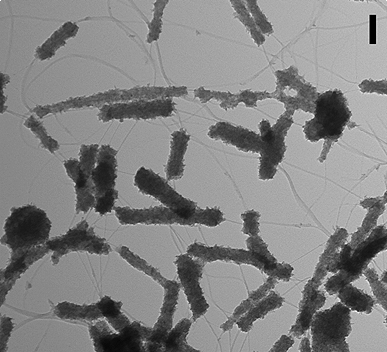Their findings were published in the latest issue of the Journal of the American Chemical Society (JACS).
Even before blood tests are administered, those with diabetes often recognize the condition’s symptoms through their breath acetone—a characteristic ‘fruity’ odour that increases significantly with high glucose levels. The Pitt team was interested in this biomarker as a possible diagnostic tool.

‘Once patients are diagnosed with diabetes, they have to monitor their condition for the rest of their lives,’ said Alexander Star, principal investigator of the project and Pitt associate professor of chemistry. ‘Current monitoring devices are mostly based on blood glucose analysis, so the development of alternative devices that are non-invasive, inexpensive, and provide easy-to-use breath analysis could completely change the paradigm of self-monitoring diabetes.’
Together with his colleagues—Dan Sorescu, a research physicist at the National Energy Technology Laboratory, and Mengning Ding, a Pitt graduate student studying chemistry—Star used a so-called ‘sol-gel approach,’ a method for using small molecules to produce solid materials.
The team combined titanium dioxide with carbon nanotubes, which hold the particles together. This method effectively combined the electrical properties of the tubes with the light-illuminating powers of the titanium dioxide. They then created the sensor device by using these materials as an electrical semiconductor, measuring its electrical resistance.
The researchers found the sensor could be activated with light to produce an electrical charge. This prompted them to stimulate the carbon nanotubes in the sensor under ultraviolet light to measure acetone vapours, which they found were lower than previously reported sensitivities.
‘Our measurements have excellent detection capabilities,’ said Star. ‘If such a sensor could be developed and commercialized, it could transform the way patients with diabetes monitor their glucose levels.’
The team is currently working on a prototype of the sensor, with plans to test it on human breath samples soon.
The paper, Photoinduced Charge Transfer and Acetone Sensitivity of Single-Walled Carbon Nanotube-Titanium Dioxide Hybrids, was first published in JACS online June 5. The work was performed in support of ongoing research at the US National Energy Technology Laboratory.




Glasgow trial explores AR cues for autonomous road safety
They've ploughed into a few vulnerable road users in the past. Making that less likely will make it spectacularly easy to stop the traffic for...